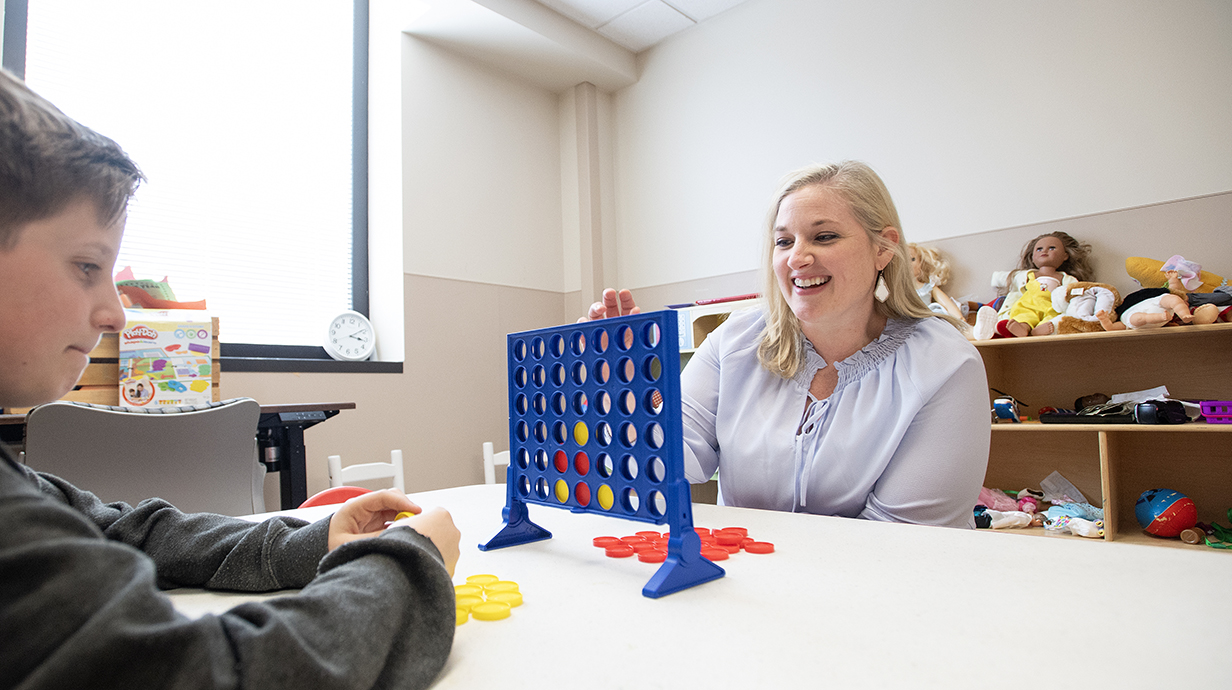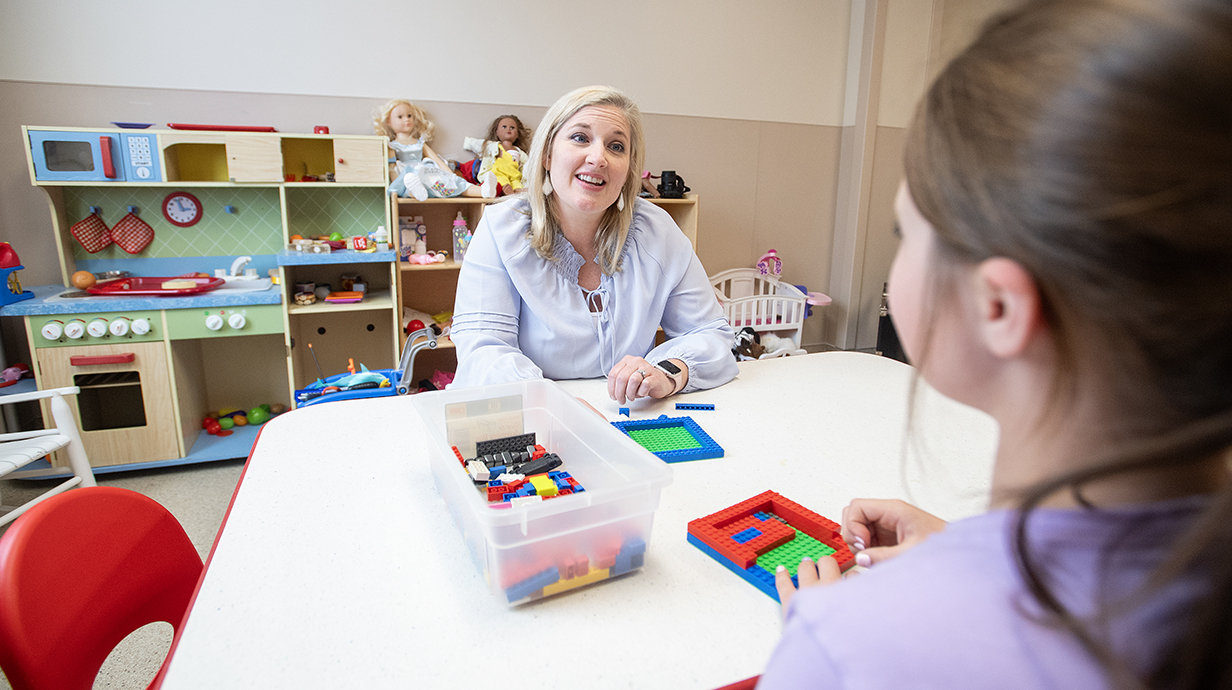News You Can Use: More to Play Therapy Than Play
UM experts share benefits of play therapy when helping children with problems

OXFORD, Miss. – To an outsider, it may look like children are simply playing with toys. But through this activity, children can reveal the struggles they are facing.
The technique is called play therapy, and two University of Mississippi experts say it is safe and effective way to help children practice problem solving and develop new coping behaviors and social skills.
Play therapy uses activities and materials – such as clay, blocks, puppets, action figures, dolls or finger paint – that allow a child to express themselves. A trained therapist uses play to observe and gain insight into a child's internal conflicts, unresolved trauma and relationships.
Play therapy techniques are being integrated into elementary schools and school counseling program, said Amanda Winburn, associate professor of counselor education and coordinator for the university's play therapy program. This is because they are developmentally appropriate for school-age children and can be used for children from diverse backgrounds or who have varying social and psychological needs.
Kenya Wolff, associate professor of early childhood education at Ole Miss and a former child care center director, said she often referred children who were struggling emotionally or behaviorally to play therapy.
"Play therapy can be beneficial for any child, but especially for a child who may benefit from processing their experiences through play," Wolff said. "In the past, I've referred children who are experiencing difficulties or struggles such as behavioral issues, emotional challenges, trauma, grief, anxiety, depression, family issues like divorce, or when they are having trouble expressing their thoughts and feelings verbally.

A student enjoys playing with Legos during a session with Sarah Breithaupt, a graduate of the university's play therapy program and counselor at Bramlett Elementary School in Oxford. Play therapy is being used increasingly to help children cope with trauma and conflict. Photo by Thomas Graning/Ole Miss Digital Imaging Services
"Educators can work with play therapists to better understand children's needs and establish a safe and empathetic environment for children to navigate their feelings and confront their challenges."
Play therapy is being used more because the aftereffects of the COVID-19 pandemic have affected many children's mental health and well-being, Wolff said.
"The disruption to their daily routines, social interactions and educational environment has led to increased levels of stress, anxiety, depression and other mental health challenges among many children," she said. "As a result, there is a growing awareness and recognition of the importance of prioritizing and addressing childhood mental health needs.”
When getting started with play therapy, it is important to find a licensed mental health professional who is credentialed as a play therapist or a school-based registered play therapist who has experience in the field, Winburn and Wolff agreed. The Association for Play Therapy offers a directory of registered play therapists.
It is also important to find a play therapist with whom both parent and child feel completely comfortable. Research the therapist being considered, ask for recommendations and speak with the therapist about their approach before introducing them to the child.
Directive and nondirective are the two main types of play therapy. In directive play therapy, the therapist plays an active role by structuring and selecting play materials. They may encourage the child to use the props to enact pretend scenarios, express their feelings or engage them in conversations about their life.
In nondirective play therapy, the therapist provides an encouraging environment for the child to select their own toys and materials. The child leads the play session where the therapist acts as an interested and nonjudgmental bystander.
This process allows the child to engage in a journey of self-discovery and self-exploration. Overall, in nondirective play therapy, the child is the focus, rather than the presenting problem.
Techniques employed in play therapy include:
- Toy or object play – using a ball, doll, baby, telephone, magic wand, blocks, medical or sensory objects such as water or sand
- Creative arts, such as clay, drawing, painting, dance/movement or music
- Storytelling or metaphors – such as externalization play, creating a story or character that represents one of the child's problems, or bibliotherapy, discussion involving reading or other forms of literature
- Role play, such as using costumes, masks, superheroes or puppets
- Imagery and fantasy, such as visualizing positive, peaceful settings or dollhouse play
- Games that incorporate communication, self-control, cooperation, strategy or chance.
Play therapy can provide an important tool to improve childhood mental health, Wolff said.
"It needs to accessible to all children, as it can help promote emotional resilience, improve social skills, reduce anxiety, strengthen relationships and promote overall well-being," she said.
